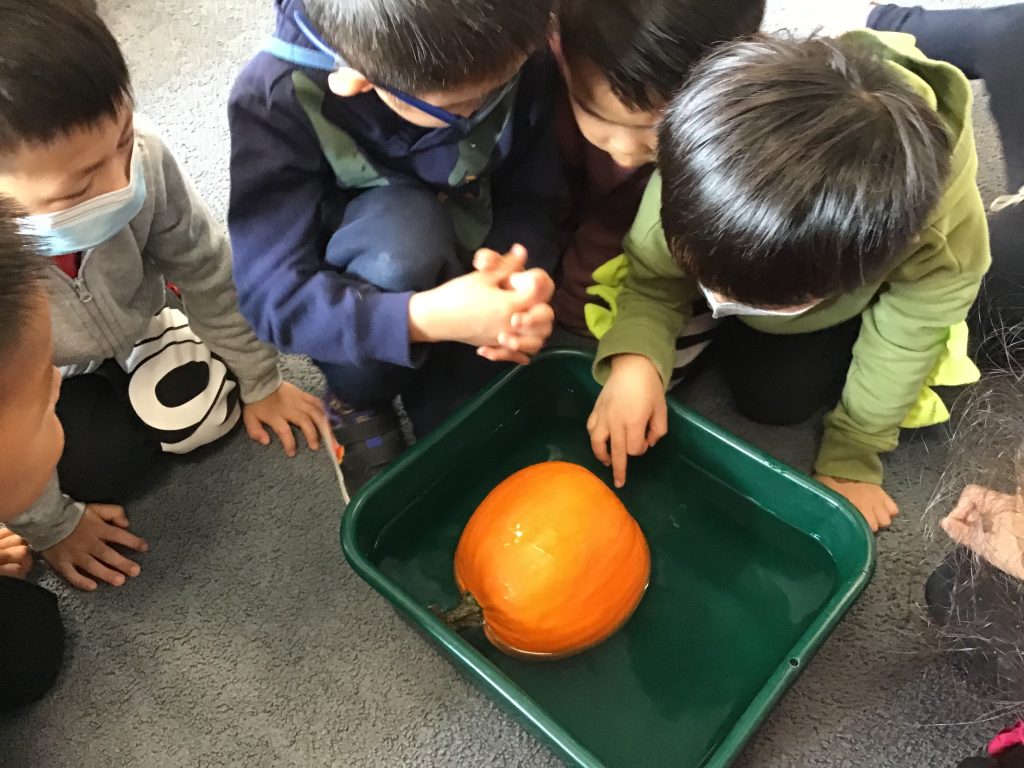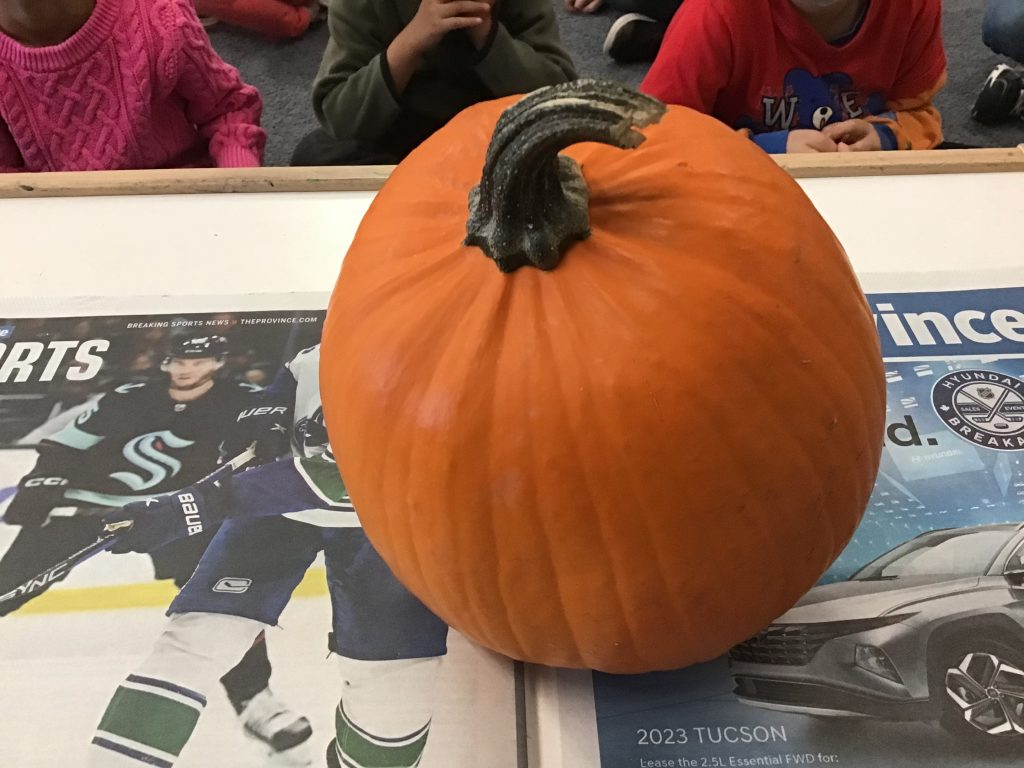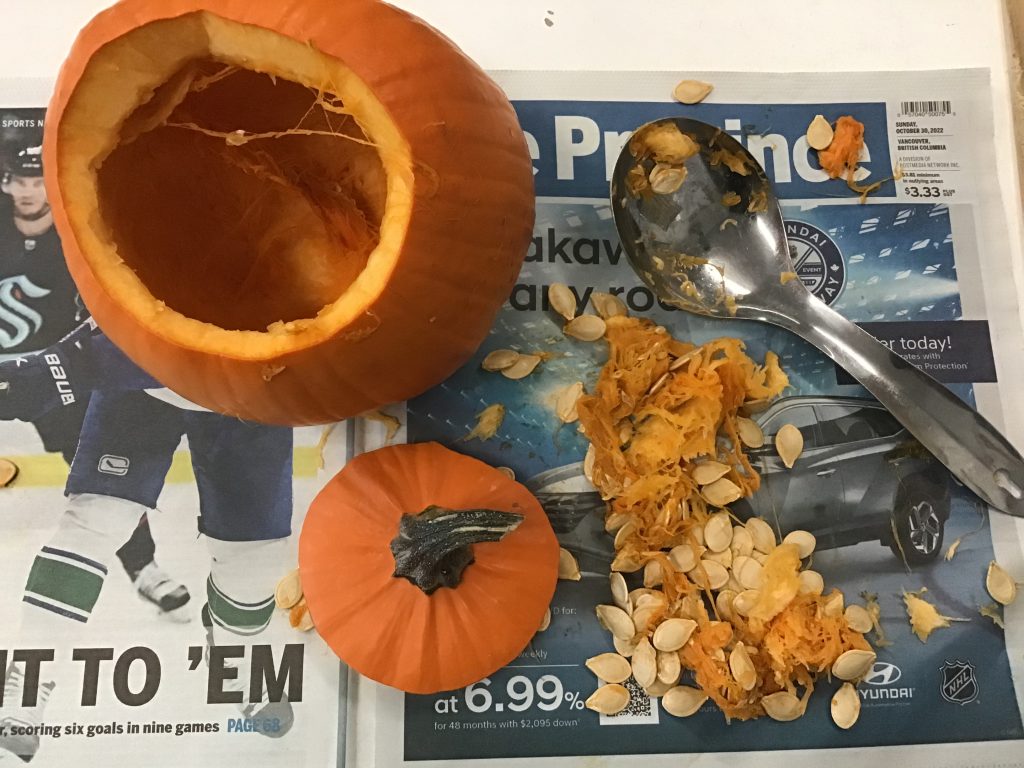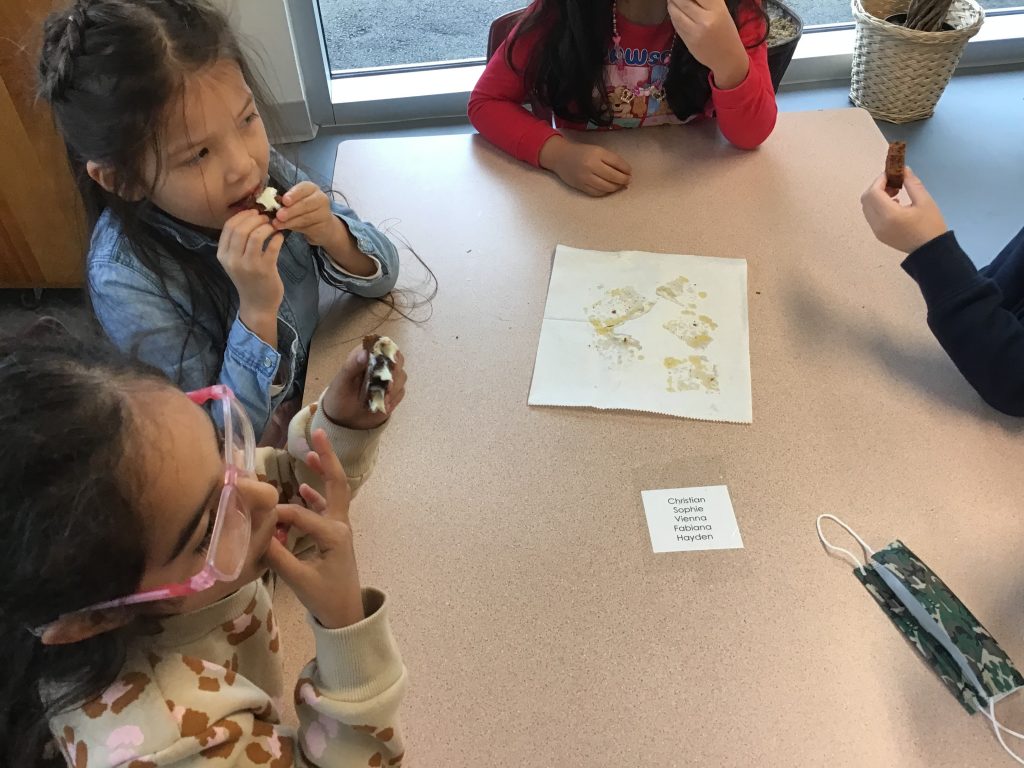Pumpkin Science.
The ability to use the senses to make exploratory observations is a curricular competency of the science curriculum for kindergarten. The little scientists of Division 12 practiced this competency by using their five senses to describe the properties of our class pumpkin.
 |
 |
 |
 |
We described what our pumpkin looked like: orange, round, small, short, skin, stem, ribs. We shook the pumpkin and heard it rattle. We took off the lid and looked inside: pulp, seeds, stringy goo. We smelled the pumpkin: phew! We touched the pulp and separated the seeds. Ms. Gourlay baked a snack using pumpkin puree. We tasted the pumpkin cake: delicious!
We were surprised by the number of seeds that were in our small pumpkin. We found out that if a pumpkin is dark orange and has a lot of ribs, it has been growing longer and will have more seeds.
We wondered if a pumpkin would sink or float in water. We asked all our friends to make a prediction. Most of us said that the pumpkin would sink because, although it was small, it was pretty heavy. We conducted our experiment and observed that a pumpkin does indeed float. We concluded that a pumpkin floats because it is not completely solid inside. It is hollow. The pulp and pumpkin seeds have space around them that is full of air. All that space and air lets the pumpkin float.
We also learned about the life cycle of a pumpkin (seed, seedling, plant, vine, flower, green pumpkin, orange pumpkin), and what pumpkins need in order to grow (soil, sun, water, oxygen).
Ask me to tell you what I know about pumpkins.
